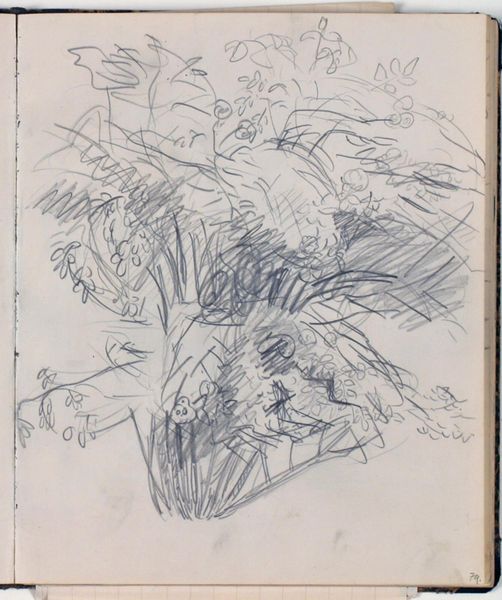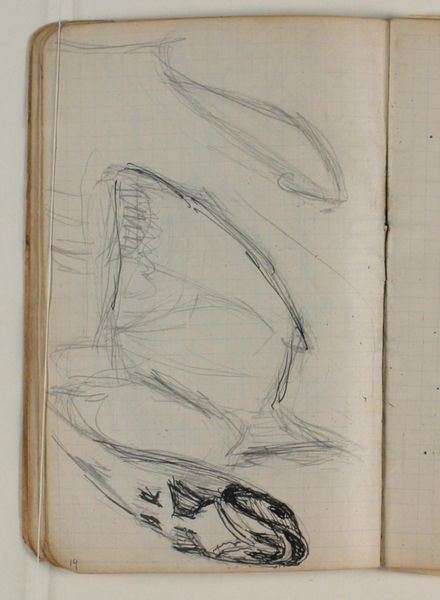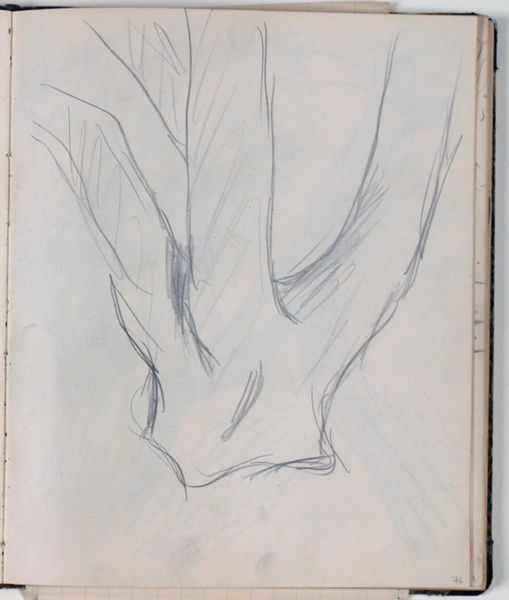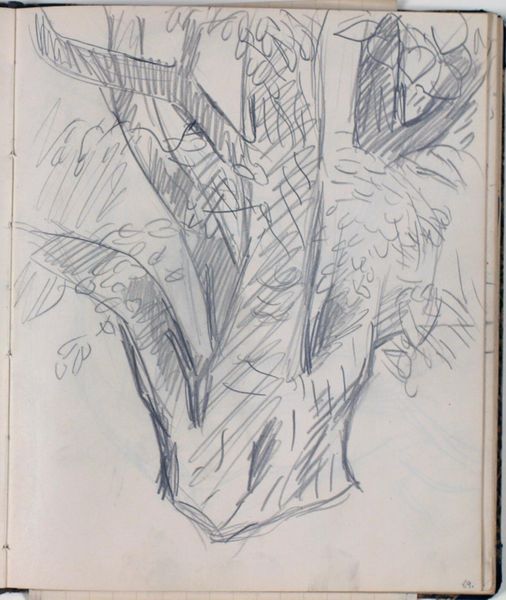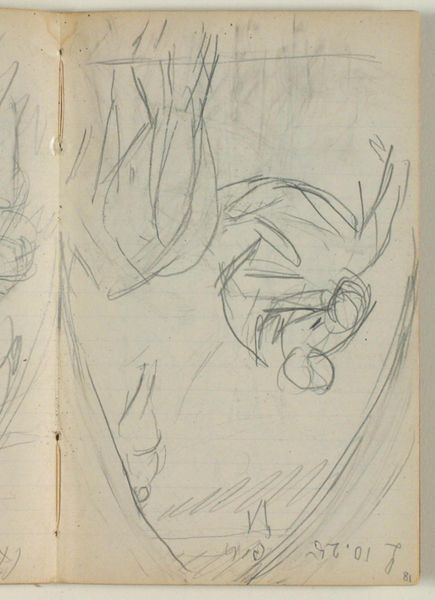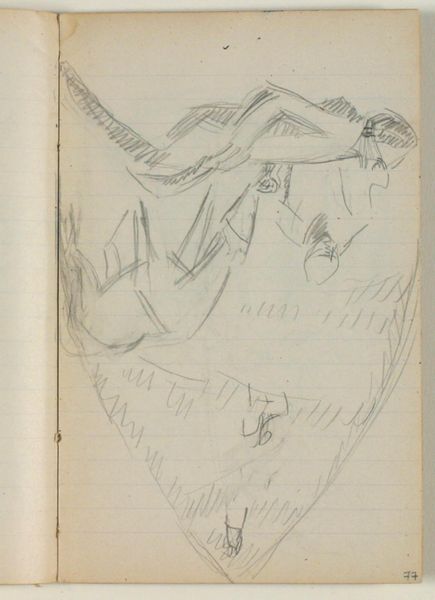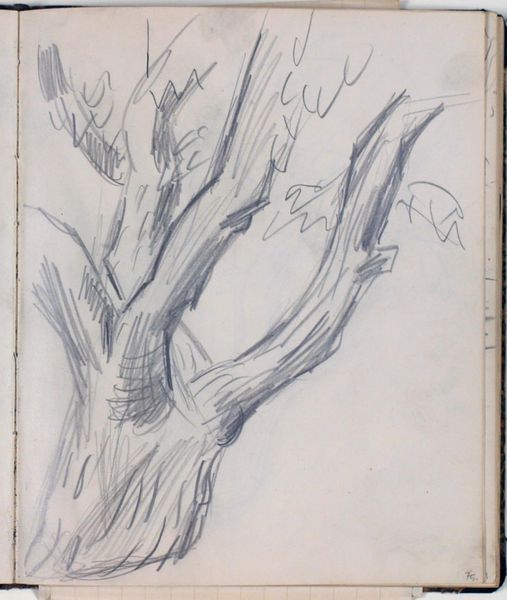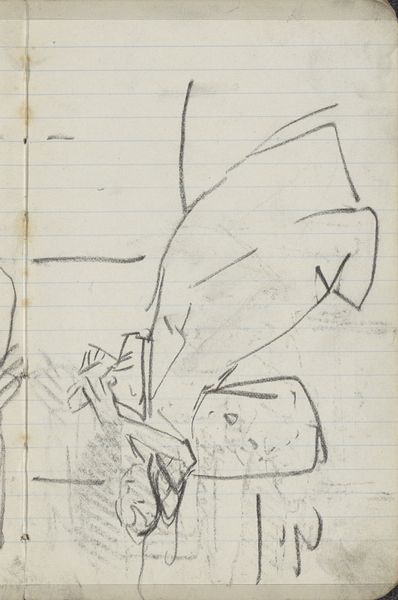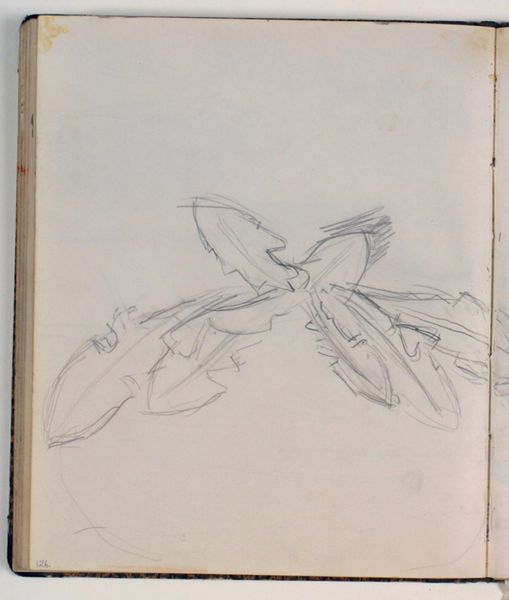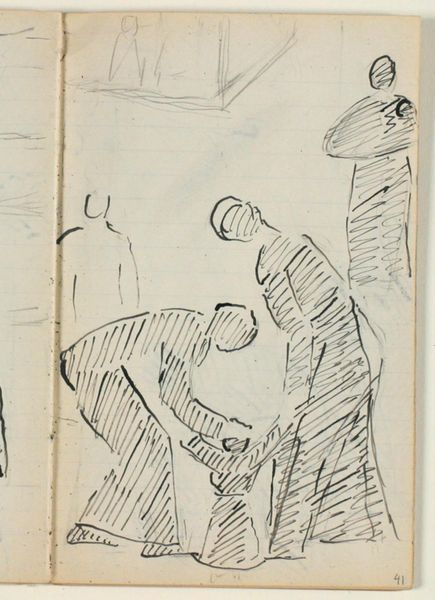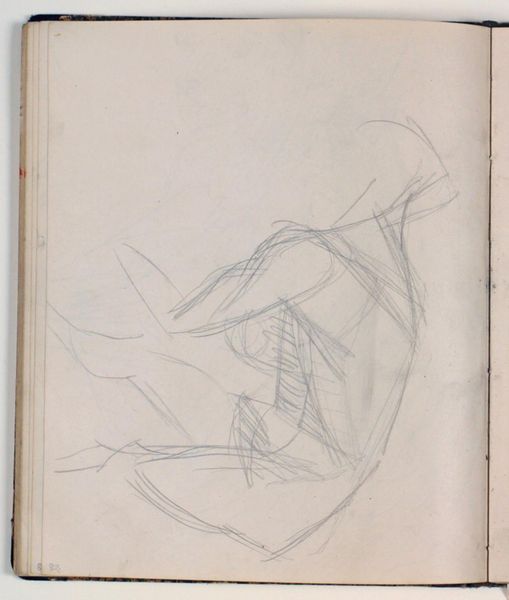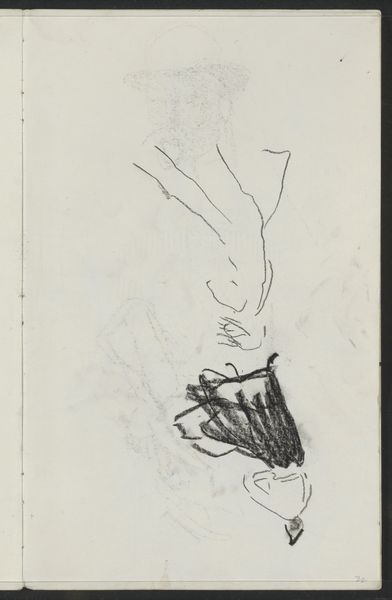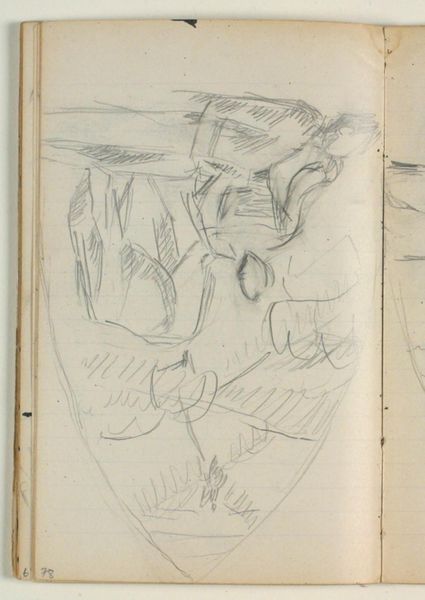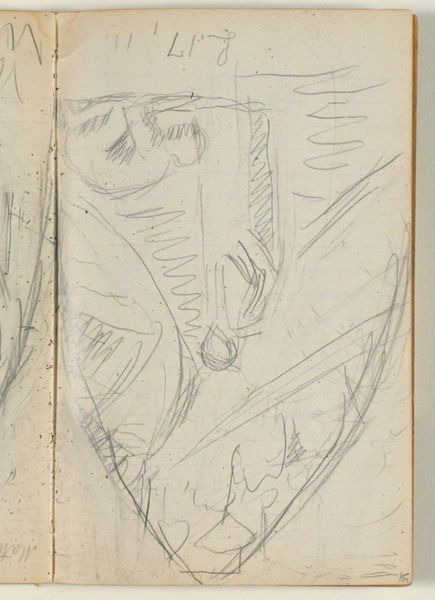
drawing, pencil
#
drawing
#
organic
#
landscape
#
pencil
#
abstraction
Dimensions: 226 mm (height) x 185 mm (width) x 112 mm (depth) (monteringsmaal), 221 mm (height) x 184 mm (width) (bladmaal)
Curator: Let’s delve into Niels Larsen Stevns' “Studie af trækrone,” a pencil drawing made sometime between 1930 and 1936. What are your initial thoughts? Editor: Spare. Restrained. Almost a haiku of a tree. The graphite lines are so efficient; they capture the essence of the crown with a stark, almost calligraphic brevity. Curator: It's interesting to consider the social and political contexts in which Stevns created this. The interwar period in Denmark was marked by both modernization and a yearning for a return to nature. Do you see this drawing reflecting those tensions? Is it a modern abstraction or a nostalgic return to the landscape? Editor: Both, perhaps. The formal reduction certainly points toward abstraction. The line quality has an expressive quality, reminding us of analytic cubism. I’m immediately drawn to the negative space, its geometry echoing the trunk’s solidity, generating tension within its organic form. Curator: Absolutely. And perhaps that tension mirrors the cultural anxieties of the time, the push and pull between industrial progress and a desire to preserve a connection with nature, a kind of ecocritical reading if you will? This work invites us to reconsider nature as a contested site, a terrain upon which societal ideologies are etched. Editor: That's a very compelling interpretation! However, it seems equally fruitful to consider it a study of form itself. The pencil work examines texture and structure more closely. See how the varying line weights suggest a sense of depth and dimensionality despite the overall sparseness? Curator: It’s also worth noting Stevns’ broader body of work, deeply entwined with nationalistic symbolism, particularly in his monumental frescoes. Might this drawing also function as a subtle articulation of national identity rooted in the Danish landscape? Editor: Perhaps, though it seems equally viable that he had a specific, tangible tree in mind as a physical entity; even without color, we can almost feel its weathered bark! Curator: Well, the beauty of art lies in its ability to hold multiple interpretations. This quick sketch can be read as both a reflection of larger societal forces and as a standalone investigation into form and technique. Editor: Precisely! From that skeletal structure, both perspectives converge to let us re-see it and think about it as if we just stepped into the artist's shoes.
Comments
No comments
Be the first to comment and join the conversation on the ultimate creative platform.
